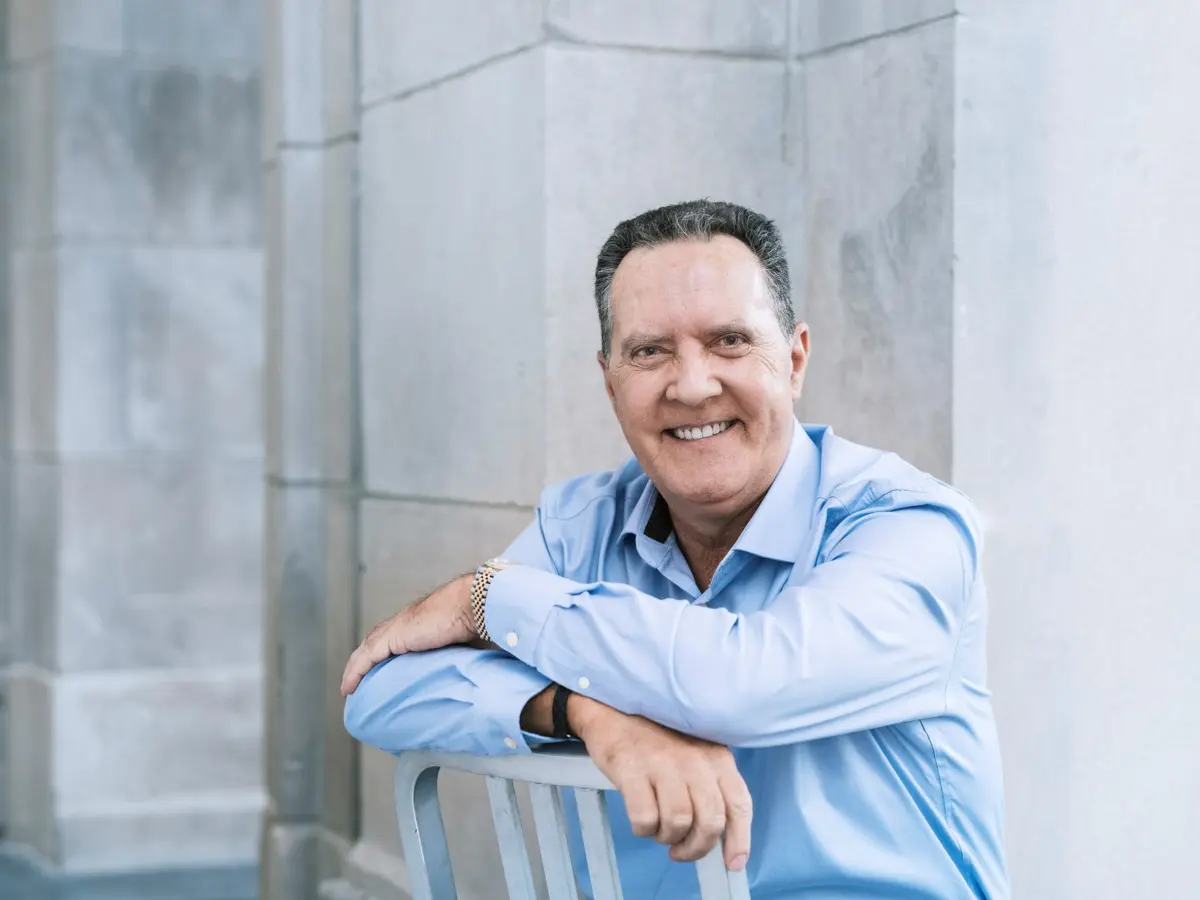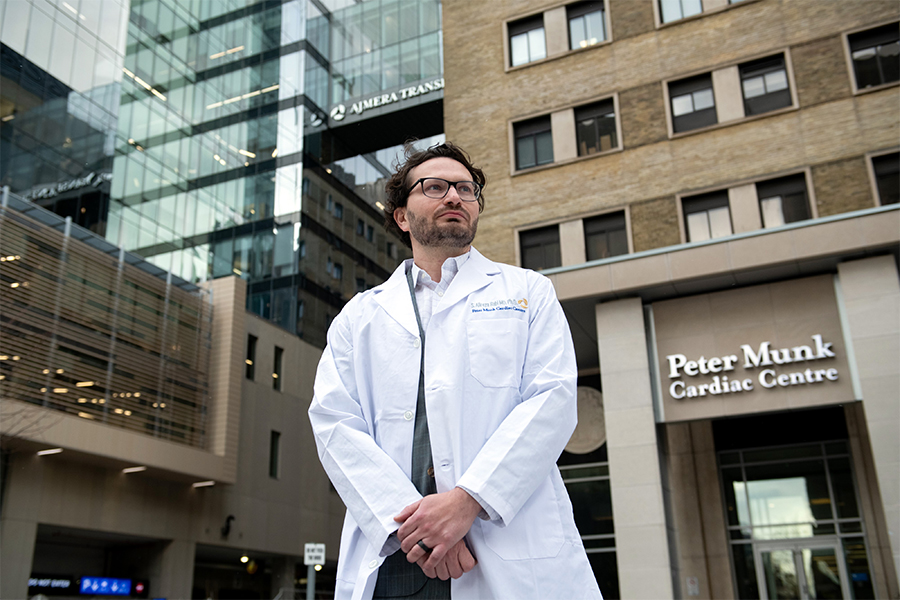Brendan Cahill donated a kidney so that his wife Joanne Kearney could receive a much needed kidney transplant at UHN’s Ajmera Transplant Centre, one of 1,000 transplants facilitated by the Canadian Blood Services Kidney Paired Donor program. (Photo: Courtesy Brendan Cahill and Joanne Kearney)
A kidney transplant was performed last month, removing one of the more than 3,000 Canadians from the waiting list. Not much more can be revealed about the procedure, or even where it took place, in order to respect patient privacy.
But for all this anonymity – it is a profoundly momentous occasion.
This procedure marked the 1000th kidney transplant performed as part of Canada’s Kidney Paired Donation (KPD) program.
Founded in 2009, here’s how the KPD program works, and what makes it unique and special. When someone living with kidney disease needs a transplant, a loved one will often step up to be their living donor.
But the living donor’s kidney isn’t always a match. Enter KPD, managed by Canadian Blood Services (CBS), which coordinates a national registry where a living donor and their intended recipient can be registered to become part of a chain of compatible transplants with other pairs.
In short – when the living donor gives, their loved one gets.
“The Kidney Paired Donation program has allowed patients to receive a living donor kidney transplant when they otherwise could not receive one directly from their living donor due to blood group or immune incompatibility.” says Dr Joseph Kim, Director of the Kidney Transplant Program at UHN’s Ajmera Transplant Centre, where 155 kidney transplants have been performed under the KPD program.
“This has given back many years of life to numerous Canadians with end-stage kidney disease and made more deceased donor kidneys available to those who do not have a living donor.”
Program has increased life expectancy and quality of life for many
Dr. Ed Cole, UHN’s retired former Physician-in-Chief and first chair of what was then called the National Living Donor Kidney Exchange Program, was a driving force behind the creation of the KPD program. And, the Ajmera Transplant Centre was one of the three Canadian hospitals to perform the first KPD transplants.
“This program is a real Canada-wide success story,” says Dr. Sunita Singh, Medical Director of UHN’s Living Kidney Donation Program.
“It requires collaboration from programs across the country, the entire Canadian donation and transplantation community coming together to make transplantation possible for those who don’t have a straightforward route to transplant due to incompatibility,” adds Dr. Singh, who also chairs the Living Donation Advisory Committee at CBS.
The KPD program significantly increases the chance of matching an organ to a patient needing a transplant. Currently the median wait time for a deceased donor kidney is 3.3 years, whereas receiving a kidney from a living donor can happen much sooner.
That’s critical given that hundreds of Canadians die each year waiting.
Also unique to the KPD program is that someone can donate a kidney even when they have no need for a loved one to get a transplant, which is known as the Non Directed Anonymous Donor (NDAD). UHN has had 51 NDADs.
“The KPD program has increased the life expectancy and quality of life of many Ontario patients with end-stage kidney disease who would have found it otherwise difficult to receive a kidney transplant in a timely manner,” says Dr. Kim.

Joanne Kearney is proof of the benefit of the KPD program.
“It allowed us to access this huge library of potential donors across the country, which was something we didn’t know existed when we started the journey to find a suitable treatment.” says Joanne, whose kidney transplant at UHN took place in February 2017 as a result of her and husband, Brendan Cahill, signing on to the KPD program registry.
“The Kidney Paired Donation program was the best way of finding a match for Jo and even getting her the best kidney she could get,” says Brendan, who donated one of his kidneys so his wife could get her much-needed transplant.
Dr. Singh notes that living kidney donors require about four to six weeks of recovery from surgery. After that time, they “can expect to return to their usual state of well-being and can also expect to live long and healthy lives doing all things they want to do – such as work, travel, play sports,” she says.
“Although there are some risks to surgery, kidney donation is a low-risk procedure. Some risks, such as kidney failure, are extremely small, far less than one per cent for most living kidney donors.”
As a transplant recipient, Joanne Kearney believes it is important to raise awareness about living donation and all the options available.
“Inform yourself, ask all the questions and do it early,” she says. “It is important that you know your options so you can advocate for yourself.”
Allows some patients to avoid dialysis altogether
For the recipient of a living donor kidney transplant, the benefits are many. The wait time to transplant can be far shorter than waiting for an organ from a deceased donor.
In addition, the lifespan of the transplant compared to those who receive a kidney from a deceased donor is higher. For example, the five-year survival rate from a living donor kidney is 90 per cent compared to 82 per cent from a deceased donor.
“In addition, having a living donor allows some patients to avoid dialysis altogether, this is called a pre-emptive transplant.” says Dr. Singh.
Since their experience with the KPD program, Joanne Kearney and Brendan Cahill are both thriving and giving back. They are actively involved with UHN Foundation’s “Live On Campaign,” which raises funds for the Ajmera Transplant Program.
They also co-founded the UHN Centre for Living Organ Donation, which aims to help more Canadians gain access to the life-saving treatment of living organ donation. Funded through philanthropy, a key focus of the centre is to offer hope to thousands of people who are waiting for a kidney transplant by making them aware of innovative solutions such as the KPD Program.
For more about the CBS Kidney Paired Donation program.
Read more about the UHN Centre for Living Donation and the UHN Foundation campaign.


